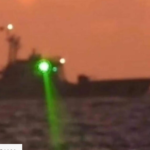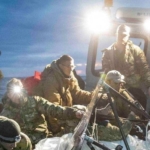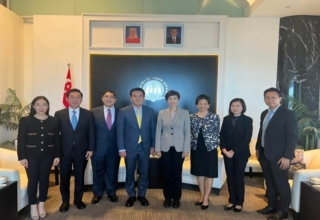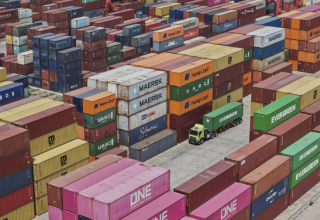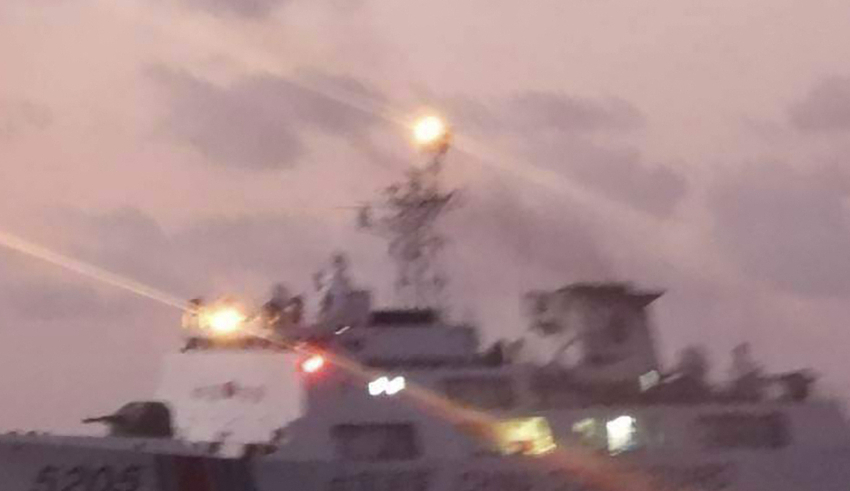
On Thursday, February 16, the Department of Foreign Affairs (DFA) confirmed that the Philippines and China made use of their newly implemented communication mechanism to address the recent deployment of a military-grade vessel against a Philippine Coast Guard ship in the West Philippine Sea by the Chinese Coast Guard. The incident occurred in the West Philippine Sea. The Chinese Coast Guard.
The announcement was provided by DFA Spokesperson Ma. Teresita Daza during an appearance with media on Thursday. She also mentioned that the call was started by China’s foreign ministry at 10:38 am on Tuesday, February 14.
Over the course of the call, Daza stated that the Chinese Ministry of Foreign Affairs had refuted several elements of the event that had been relayed by the PCG, most notably the assertion that the China Coast Guard Ship was equipped with a laser of a military-grade.
“The focal point of the Chinese foreign ministry refuted reports that the Chinese Coast Guard vessel involved in the incident was equipped with a laser that was suitable for military use. Daza said that the person had stated that the device simply included a range finder, which it utilizes to determine the distance between two points.”
The Philippines, on the other hand, has not changed its stance about the specifics of the event, which were initially given by the PCG. “As far as the Department of Foreign Affairs is concerned, we have no reason to reject the description of the event provided by the Philippine Coast Guard,” Daza said.
The state visit that President Ferdinand Marcos Jr. paid to China at the beginning of January resulted in the development of a direct communication channel on problems pertaining to the maritime domain.
Manila and Beijing had envisioned that the new communication mechanism would be able to supplement previous means of contact between the two countries by promoting discourse on more pressing matters when they decided to create the additional channel. The communication line was also established with the goal of defusing tensions relating to the maritime dispute between the two countries.
The first use of the Department of Foreign Affairs’ (DFA) brand-new communication mechanism with China helped to work out, in real time, the specifics of how the two nations will run the communication channel.
Prior to the occurrence of the event, the Department of Foreign Affairs (DFA) and the Chinese Ministry of Foreign Affairs (MOFA) had been collaborating to choose focal individuals for the mechanism and complete the specifics of how each side would interact with the other.
Keep Reading
“I’m sorry to say that,” Daza said after that transpired. “Focal people have been identified by both parties… then an agreement was reached over the number that would be employed.” It also provided a chance to specify exactly what would be regarded an urgent topic that would justify the usage of the communication channel. This was another advantage of the situation.
In addition to this, the initial usage of the communication mechanism brought to light the necessity for both countries to ground their dialogues in facts, as stated by Daza.
“We appreciate that there is another form of communication but we hope that future communications, whether it’s done through regular diplomatic channels or this communication mechanism, would be grounded on facts and done in good faith and with the goal of effectively managing disagreements between our two countries,” she said. “We hope that future communications, whether it’s done through regular diplomatic channels or this communication mechanism would be done”
Daza continued by saying, “If we do not deal with facts, and if it is not done in good faith, and if we do not share the same emotion to manage the issue…. Where does it stand in terms of its value?”
The deployment of a laser of a military grade by China on the Philippine Navy vessel BRP Malapascua is the most recent incident to heighten tensions in the hazardous waterway. Because of the event, Marcos called in Huang Xilian, the Chinese ambassador to the Philippines. This was a very unusual move, but it demonstrated how seriously China was taking its operations against the Philippines.
Notwithstanding this, China has persisted in denying the account that the PCG provided. Instead, a spokesperson for the Chinese Ministry of Foreign Affairs named Wang Wenbin stated that the CCG ship made use of a “hand-held laser speed detector and hand-held greenlight pointer” in order to “measure the distance and speed of the Philippine vessel and signal directions to ensure navigation safety.”
Read: The beta version of GCash Abroad is currently accessible in Japan, Australia, and Italy
